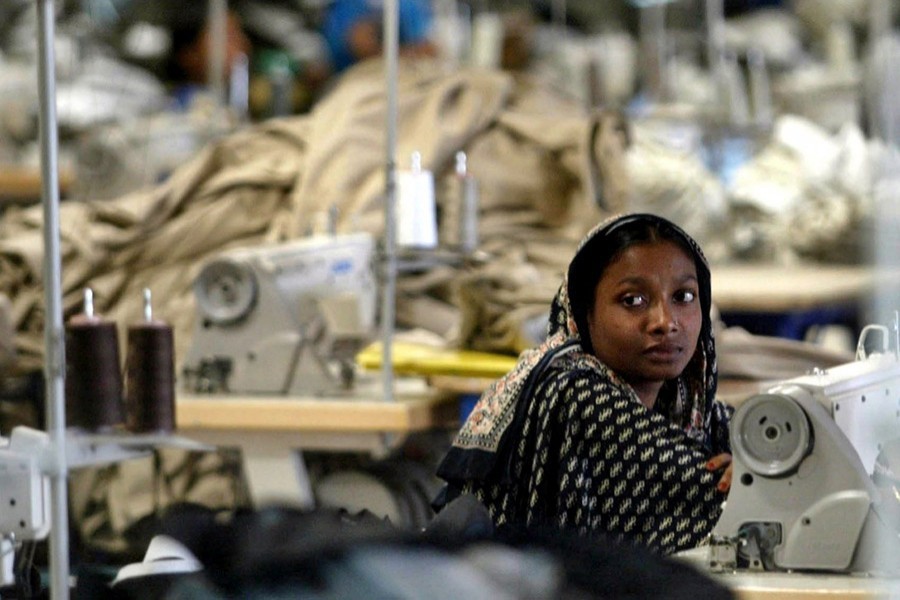Bangladesh won't face a crisis like Sri Lanka's at this moment for its current level of comfortable foreign debt-GDP ratio, the World Bank says on review of the country's latest economic condition.
"Bangladesh is not in the position like Sri Lanka's. Its debt-GDP (gross domestic product) ratio is still very low at 17 per cent. But Bangladesh can learn lesson from its neighbour and shall ensure best use of the external loans," says WB Chief Economist for South Asia Hans Timmer.
Meanwhile, the World Bank Wednesday forecast Bangladesh's economic growth at 6.4 per cent in the current fiscal year (FY) 2021-22, leveraged by its strong export growth.
Mr Timmer was briefing South Asian journalists on the day from the WB headquarters in Washington after unveiling the 'South Asia Economic Focus (SAEF)' report simultaneously across the South Asian nations.
World Bank's Dhaka office also rolled out the 'Bangladesh Development Update-Recovery and Resilience Amid Global Uncertainty' on the day, specifying scales of its post-pandemic economic rebound and challenges ahead.
The development update says public debt remains sustainable, and the March 2022 joint World Bank-IMF Debt Sustainability Analysis assessed that Bangladesh remained at low risk of external-and public- debt distress.

The update is a companion piece to the latest SAEF which notes growth in South Asia, already uneven and fragile, will be slower than previously projected, mostly due to the impacts of the war in Ukraine.
In its SAEF report the multilateral development financier has also projected a stirring GDP growth for Bangladesh in the next FY2023 when the country could expand at a 6.7-per cent rate, 0.02 percentage points lower than its previous January estimation.
However, a slowdown in growth in major export markets, particularly in the European Union, could, in turn, hamper export growth, the WB report notes.
The economic growth faces new headwinds as global commodity prices increase amid the uncertainty created by the Russia-Ukraine war, it adds.
The SAEF report says Bangladesh's GDP growth is expected to remain resilient in FY2023, riding strong domestic demand.
"In Bangladesh, GDP is expected to increase by 6.4 per cent in FY2022 and 6.7 per cent in FY2023. While economic disruptions related to the Covid-19 pandemic are waning, garment exports are expected to remain strong if Bangladesh is able to maintain its market share in Europe and the United States."
When asked, the WB Chief Economist for South Asian, Mr Timmer, said Bangladesh could learn three things from the Lanka crisis that triggered political turmoil.
"Bangladesh should firstly be cautious on the borrowing limit of bilateral loans and their utilisation, secondly, prudent use of current comfortable forex reserves, and thirdly higher domestic resource mobilisation against extended public spending," he added.
Bangladesh has made a strong economic recovery from the Covid-19 pandemic, but growth faces new headwinds as global commodity prices increase amid the uncertainty created by the war in Ukraine, reads the Bangladesh Development Update.
In Bangladesh, a rebound of manufacturing-and service-sector activities led strong growth in FY2021 and in the first half of FY2022. In the medium term, GDP growth is expected to remain strong.
"Headline inflation rose to 6.2 per cent in February 2022, driven by a rise in both food and non-food prices."
The war in Ukraine and associated sanctions may lead to a higher current-account deficit and rising inflation as global commodity prices surge, the report forewarns.
"Following a strong economic recovery from the pandemic, estimated poverty declined to 11.9 per cent in FY2021 from 12.5 per cent in FY20, as per the international poverty rate," said Mercy Tembon, Country Director for Bangladesh and Bhutan.
"Going forward, close monitoring of inflation and the potential impacts of the war in Ukraine will be important for the country's sustainable and inclusive growth. The World Bank stands ready to help Bangladesh address structural reforms to support recovery and strengthen resilience to future shocks," she added.
The WB SAEF report says Bangladesh should continue to see buoyant growth of garment exports by 2023.
"Moreover, higher remittances will offset higher import bills in Bangladesh and Nepal as higher oil prices underpin demand for migrant workers in Gulf Cooperation Council (GCC) countries."
About the impact on GDP by export, the WB says growth would be lower, mainly through the investment channel. Most countries are not large importers of intermediate products, as the manufacturing sector in the region is less than 15 per cent of GDP, so the effect through imports would be small and reflected in lower imports of intermediate goods and durable goods in 2022.
Export growth would be affected most, especially in Sri Lanka, Pakistan, India, and Bangladesh, which have the largest share of exports of manufacturing goods, it adds.
Almost 60 per cent of the region's export value in 2020 in those countries comprised manufacturing goods.


